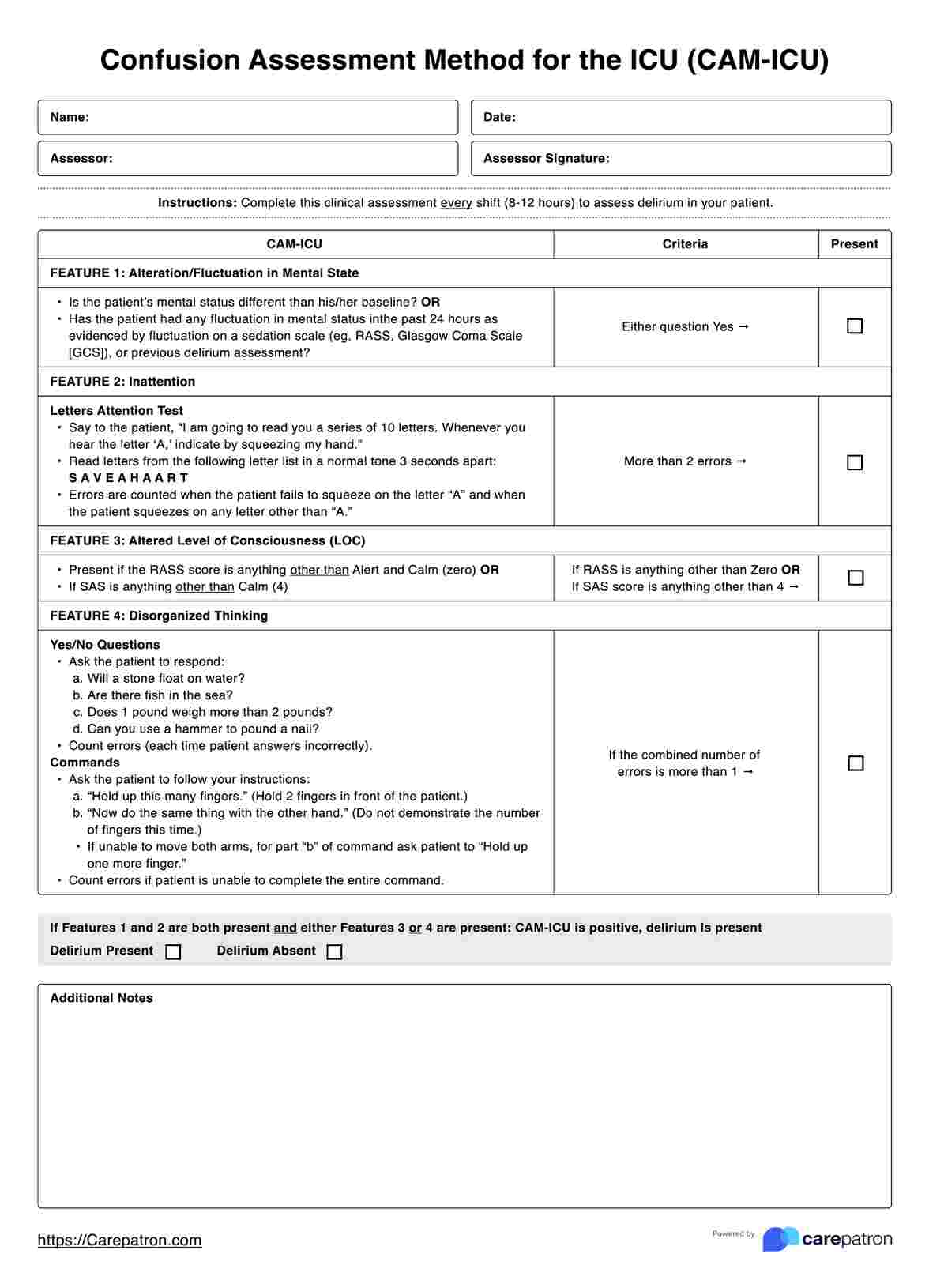The CAM-ICU evaluates four criteria: alteration in mental status, inattention, altered level of consciousness, and disorganized thinking. If the patient displays at least two of these features, they are considered to have delirium.

Confusion Assessment Method for the ICU (CAM-ICU)
Learn more about the Confusion Assessment Method for the ICU (CAM-ICU), its purpose, and how to use it. Plus, get a free PDF guide and example.
Use Template
Confusion Assessment Method for the ICU (CAM-ICU) Template
Commonly asked questions
The CAM-ICU assessment measures the presence and severity of delirium in critically ill patients.
To administer the CAM-ICU assessment, you should ask questions and observe your patient for signs of delirium. Ask questions about orientation, immediate recall, sustained attention, and abstract thinking. Additionally, you should observe and note your patient's behavior and level of consciousness.
EHR and practice management software
Get started for free
*No credit card required
Free
$0/usd
Unlimited clients
Telehealth
1GB of storage
Client portal text
Automated billing and online payments











